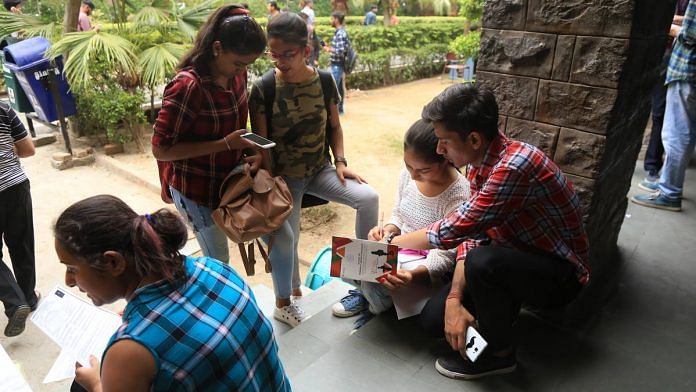India’s great demographic dividend should hold enormous promise. There are 650 million Indians under the age of 25, and 845 million under 35, and the country’s workforce is expected to grow to 1.08 billion by 2050.
But although these numbers seem positive, the trends tell a different story. The problem manifests itself in multiple ways; 1.4 million students write competitive exams for fewer than 6,000 general quota seats at the elite Indian Institutes of Technology (IITs), while entry-level jobs in government offices are attracting applications from MBA graduates and PhD holders.
It’s as tragic as it is shocking that among the 13 million youngsters that join the workforce each year, only one in four management professionals, one in five engineers and one in ten graduates are employable. India’s skills gap and obsolete teaching curricula contribute to this trend, while forcing innumerable young people to settle for much less than they deserve. While the education ecosystem in India on the whole needs a major revamp, the group with the strongest case for consideration, effort and refurbishment is the 27.2% of India’s youth – almost 175 million youngsters – who are not in education, employment or training.
This left-behind cohort of young people aged between 15 and 29 assumes an even greater significance given India’s current focus on youth productivity, on promoting sustainable and inclusive growth, and on implementing multiple initiatives to improve their situation.
The Gap
The privilege
The socio-economic fibre that glues the Indian economy together is thin. While the upper and upper-middle classes can easily afford to keep their children in education for as long as they wish, the same cannot be said for the middle classes, who must prioritise affordability over their wishes, or for the lower middle-classes, who have to work hard to make ends meet. The entire scenario begs the question: why is the privilege of education the prerogative of the affluent? The specific reasons behind educational attrition and dropouts need to be analysed at a micro-level.
The cultural context
Shockingly, a little under 6.5% of young men fall into this left-behind category as opposed to about 45% of young women. Precedence continues to be given to male children in India for a plethora of reasons. Although this is the 21st century, the idea of living off a ‘woman’s income’ is still taboo – a notion that is not uncommon in semi-urban and urban establishments. The opportunities for education, economic empowerment and financial independence are given to boys, while girls are forced to sit at home. The fact that their ‘honour’ needs protection, and that families find it easier to keep girls at home rather than be in a constant frenzy about their safety, also contributes to the high number of young women deprived of education, training or a job.
The allied issues
Leaving education early has multi-faceted consequences. Lack of a peer network, social hygiene, information beyond the classroom and intimidating social isolation can deter young people who have dropped out of school as children from returning to education and training.
Metrics for success
The definition of success has long been debated; it means different things to different people. Putting people into categories, and considering a job placement as the sole criterion for determining whether someone is a success, is hardly efficient. Credibly defining and accepting alternative metrics such as happiness, contentment, ease of re-enrollment in education, the ability to confidently overcome barriers, and economically viable productivity – is a pressing need today.
The solution
Incorporation of a skills-based curriculum
The Indian education system needs to change. It absolutely must. While our children have been taught the same set national curricula for the past five decades, the world outside has moved on. Rampant changes in technological frameworks, rapid automation and in the requirements for employability and professional skills necessitate the development and execution of both a robust skills-oriented curriculum and an exciting learning pedagogy. Our focus needs to go beyond languages, science and mathematics, and towards the development of the professional and life skills that will improve students’ employability, as well as the effective design and delivery of a new vocational curriculum.
Bringing industry into the classroom
One of the prime challenges facing young people not in education, employment or training is the severe lack of industrial exposure. This is especially critical for students engaged in vocational courses. Replicating the idea of industry-designed courses, as are currently offered at many universities, is a good idea. It is no secret that we have a severe need for a skilled workforce. Quite often, many organizations absorb the learners they train and help them into work placements. The most significant takeaway, however, is that learners can prepare for exactly what is required of them in the workplace, without the added pressure of re-enrollment into the education system.
Also read: Is politics a cool career option for Indian youth?
Dipankar Trehan is the Growth and Creative Lead of Mindler Education Pvt Ltd.
This article was originally published on the website of The World Economic Forum. Read the original article here.




As important as it is to bring industry into the classroom and honing social skills and personality development in college students, it is also a big hurdle to make that kind of all round education possible for students of all social levels, in my opinion.
Bad situation
Most of the college now is a factory producing poor quality candidates fit to be only delivery boy